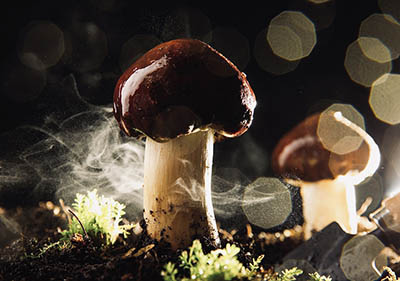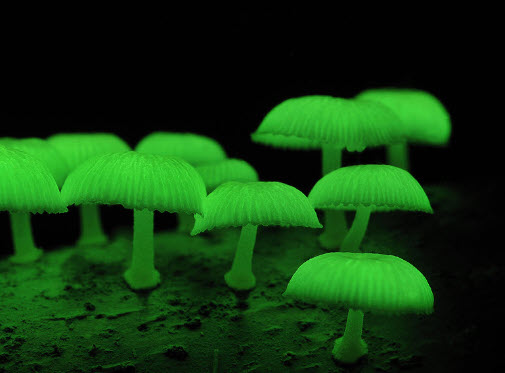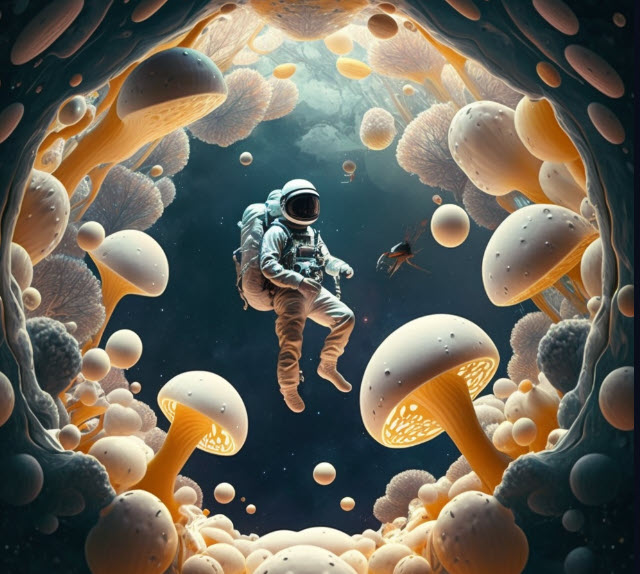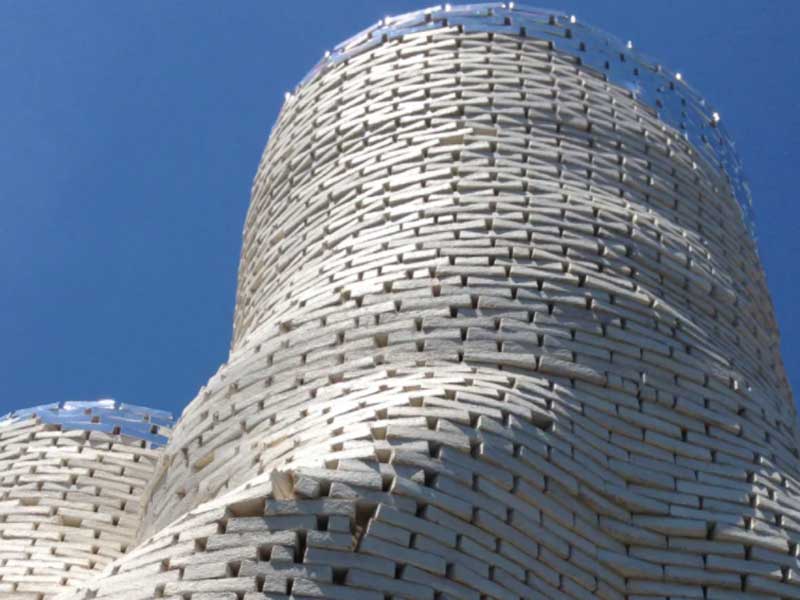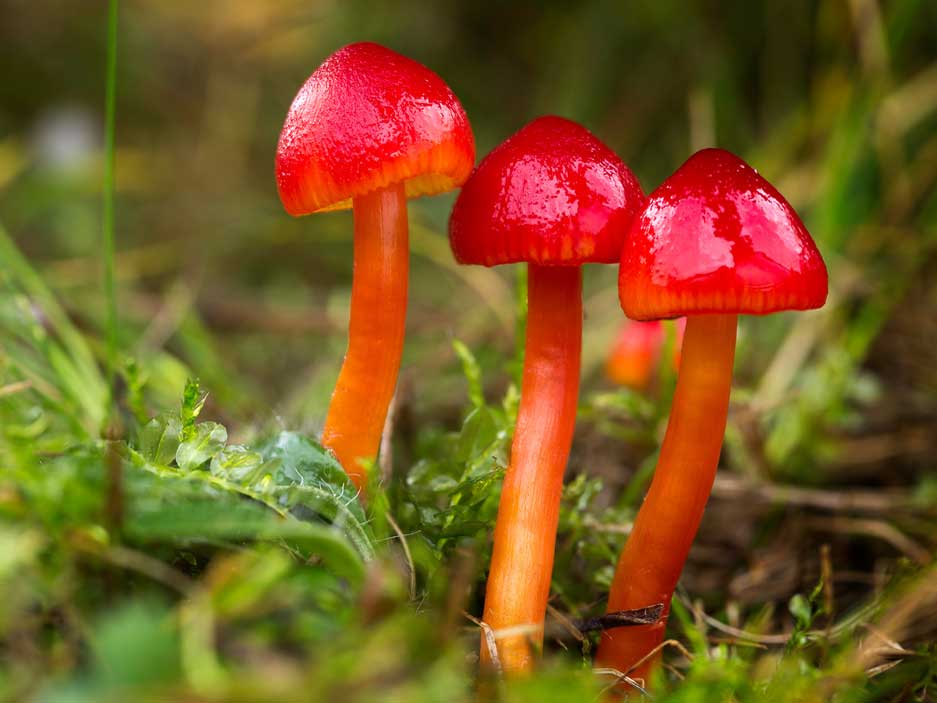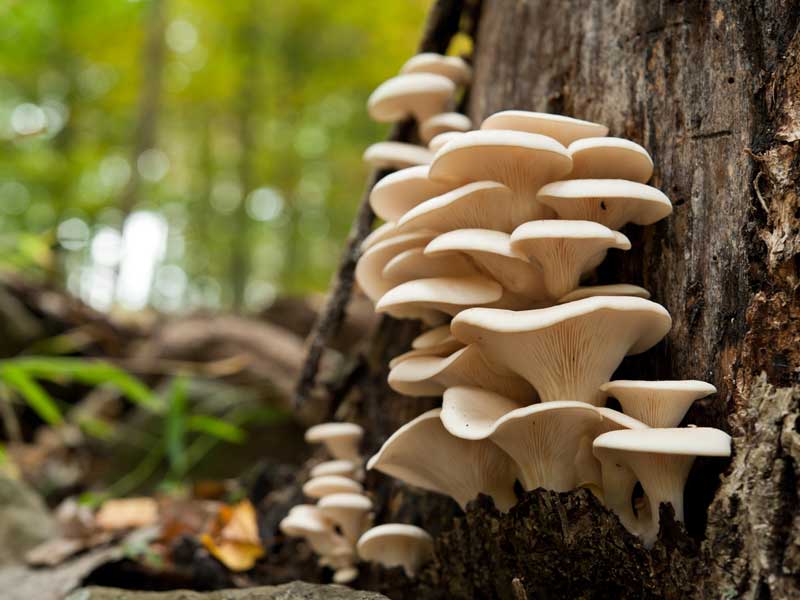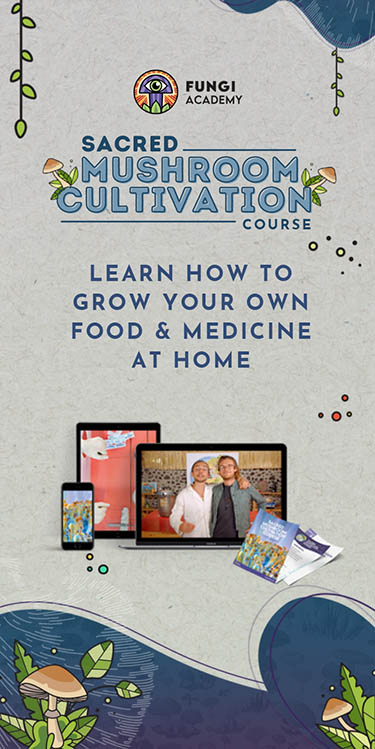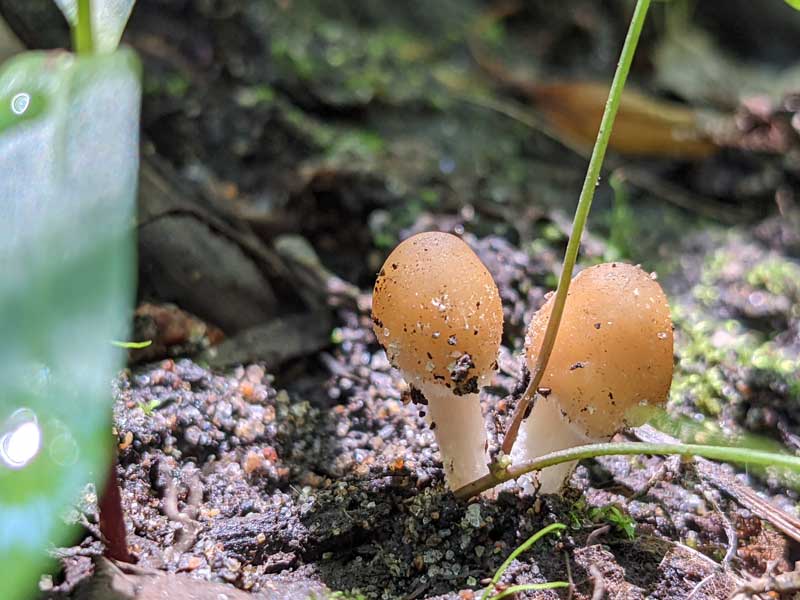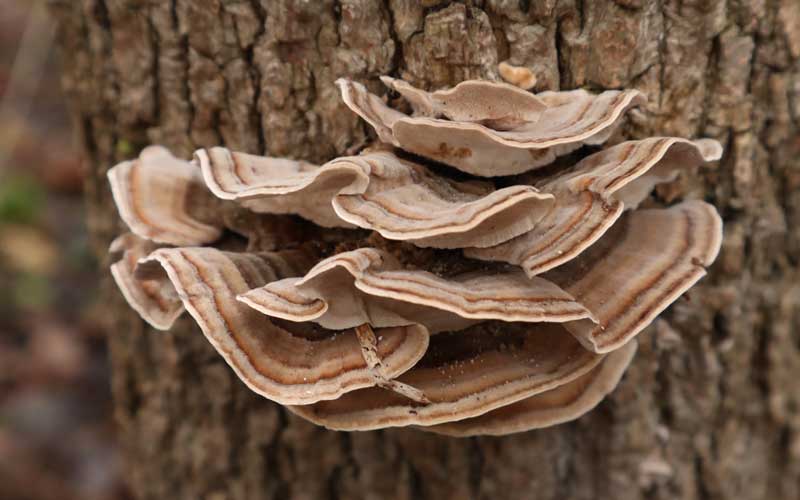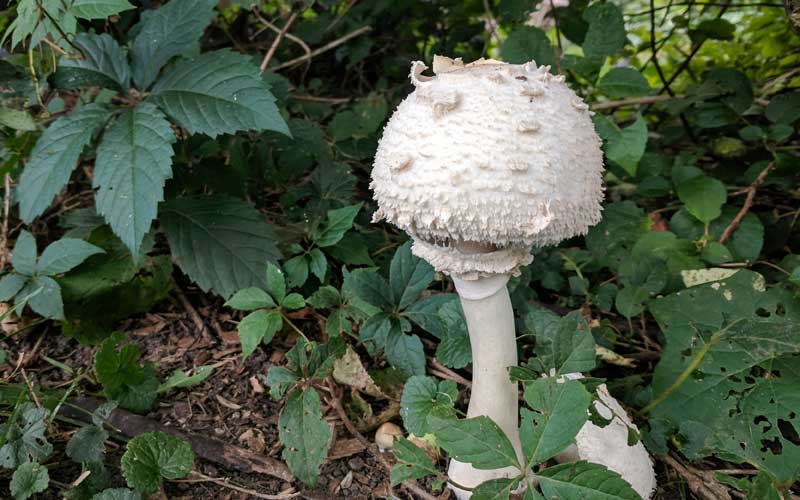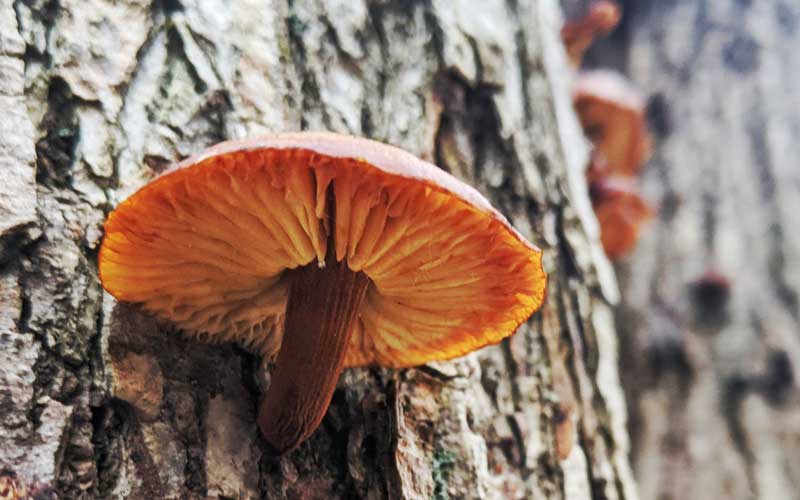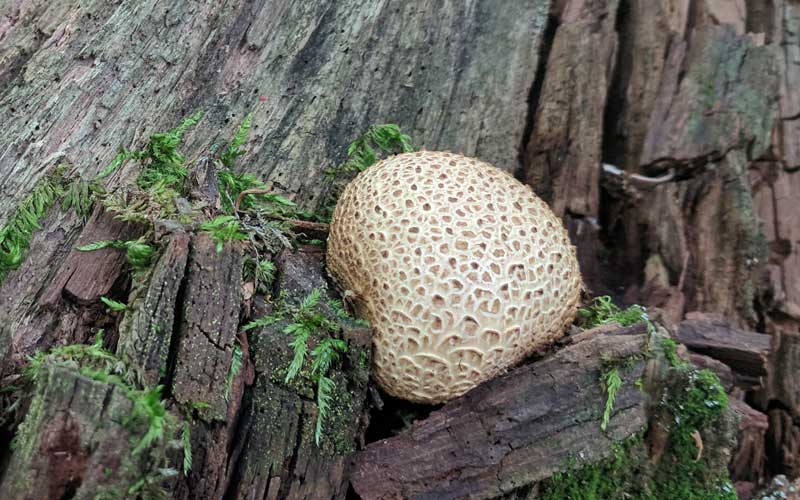- Home
- What's New
- Incredible Fungi
6 Incredible things about fungi and mushrooms you probably don’t know.
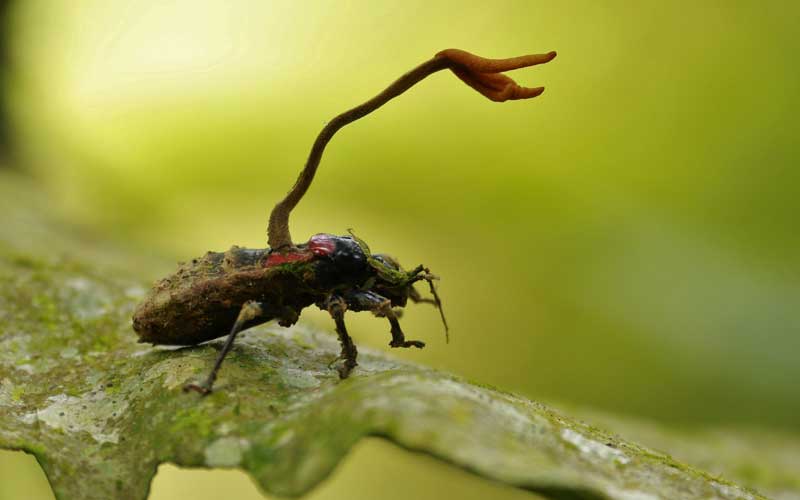 A Cordyceps mushroom growing out of the dead body of an insect.
A Cordyceps mushroom growing out of the dead body of an insect.When people think about mushrooms, they’re likely thinking about the button mushrooms they see on a pizza or on a burger.
As for fungi, that’s something nasty people get under their toenails. Or it grows on a damp wall in the basement.
Well, it turns out mushrooms and fungi are a whole lot more interesting than that.
#1: Cordyceps fungi turn insects into zombies.
Cordyceps is a genus of parasitic fungi that feeds on insects.
While fungi usually get their nutrition from decomposing matter, like rotting logs and other vegetation, cordyceps feed on living insects… such as ants, beetles and caterpillars.
One of the better-know examples is Cordyceps lloydii, which infects living ants with its spores. The fungus spreads throughout the body of the ant, including its muscles.
Although nobody yet understands exactly how it works, the fungus then gets the ant to do something it would normally never do. The ant finds a tree or plant and climbs up it. It then crawls under a leaf, clamps a vein of the leaf in its jaws in a death grip, and dies.
The mushroom then grows out of the dead ant’s head. Once mature, it releases its spores, infecting other ants on the ground below. And so the cycle continues.
On the plus side, cordyceps mushrooms have strong medicinal properties and are used to make supplements and tinctures.
A second example of fungi turning insects into zombies is the infection of Cicadas by Massospora cicadina.
#2: Leaf-cutting ants grow mycelium as food.
While it’s a little unsettling that fungi can turn insects into zombies, there is another side to the coin.
South American leaf-cutting ants actually “farm” mycelium and use it as a source of food within their colonies. It seems they’ve been doing this for millions of years now.
Worker ants shred leaves to provide a substrate or growing medium for the fungi. Once grown, the mycelium is rich in protein and provides an important source of food for the ants.
When a new queen rises and is ready to start a new colony, she takes a pellet of mycelium with her, as a starter for a new farm.
This is an extraordinarily sophisticated behavior, and gives us an insight into the complexity of the relationship between fungi and the rest of the natural world.
#3: You can return your body to nature with a mycelium coffin.
If you’ve read our page about mycelium, you know the role it plays in the ecology of the natural world.
It turns out mycelium has one more role to play. It can help us on our way from death to a rebirth through decomposition.
Bob Hendrikx, a bio-designer from the University of Delft, has designed a coffin made entirely of mycelium. No wood, cloth, metal or plastic parts. Pure mycelium.
When a body is buried in a mycelium coffin, the mycelium quickly gets to work, decomposing the body and recycling it into the soil as nutrients.
This way we get to give back to the earth that has sustained us during our lifetimes. We are no longer something to be burned or “buried”.
We can give back and complete the cycle.
#4: Some fungi thrive on radiation and can live in space.

One of the biggest challenges facing human exploration in space is the impact of radiation on the human body.
Astronauts who have spent a few months or even a year on the International Space Station display changes to their DNA when they return. Without improved protection against cosmic radiation, the future of human travel to Mars looks bleak.
This is why a team of researchers from the University of North Carolina at Charlotte and Stanford University have been studying fungi that thrive in some of the destroyed nuclear reactors in Chernobyl.
These fungi not only absorb radiation but seem to use it as an energy source.
Experiments with these fungi have already taken place on the International Space Station, where it was confirmed that there is a basis for believing fungi could be used to help improve radiation shields on future space missions.
This is extraordinary, because radiation in high doses is deadly for all life on earth... with the exception of a few species of fungi.
#5: Mushrooms can clean up oil spills.
This brings us to the topic of mycoremediation.
It turn out that certain species of fungi can be used to break up and degrade dangerous contaminants like PCBs, hydrocarbons, oil spills and even biological contaminants like E. coli.
This process of chemical mycoremediation can be used to clean up old industrial sites and even filter water.
Biological mycoremediation can be of huge value in and around farms.
One enterprising mycologist even found a fungus that would consume and break down old cigarette butts.
#6: Orchids can’t survive without fungi.
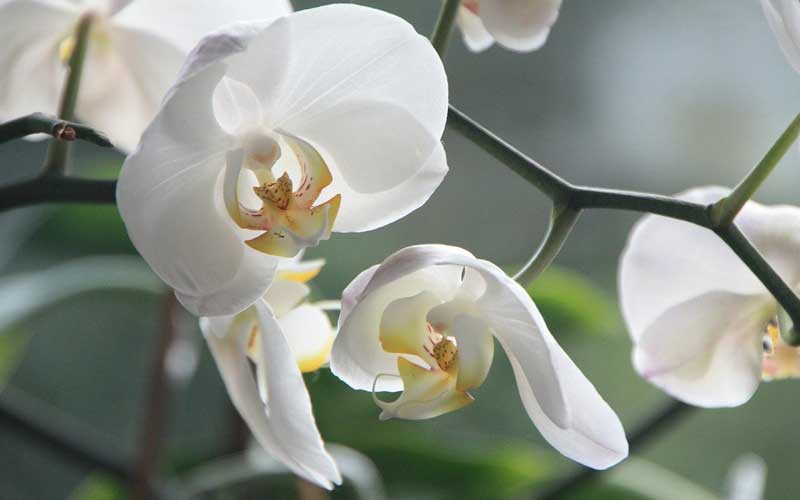
Orchids represent between 7% and 10% of all plants on the planet. But, while being plentiful, they are also uniquely vulnerable… because they can’t survive without mycorrhizal fungi.
In fact, orchid seeds can’t even germinate without fungi. Their seeds lack sufficient food reserves, so they rely on their fungal partners to supply them with carbon and mineral nutrients.
Most plants and trees that have symbiotic relationships with fungi give back as much as they take, supplying the fungi with sugars. But orchids are strangely selfish, and seem to always get the better half of the deal.
How come? Nobody seems to know. But the orchid family is threatened and vulnerable the world over, so the sooner we unlock the secrets of their relationship with mycorrhizal fungi, the better we’ll be able to help them.
Final thoughts on incredible fungi.
It may be that before reading this article, you gave very little thought to the lives of fungi.
And now, a few minutes later, you have a new lens through which to view space travel, burial, oils spills and even zombies!
So yes, mushrooms and fungi are truly incredible.
Related Topics:
Mushroom Spores Are One of Nature’s True Marvels
Spores are the microscopic “seeds” of mushrooms and fungi. They are everywhere… even in the air we breath, wherever we are. Read the full article...
How fungi communicate with language based on electrical impulses.
Researchers have uncovered how fungi communicate in a language based on electrical impulses. Read the full article...
The Enchanting World of Bioluminescent Fungi.
Explore the science, ecology, and folklore behind bioluminescent fungi and mushrooms. Full article...
Using Fungi to Protect Astronauts from Cosmic Radiation
It seems fungi may hold the key to protecting astronauts from cosmic radiation. Full article...
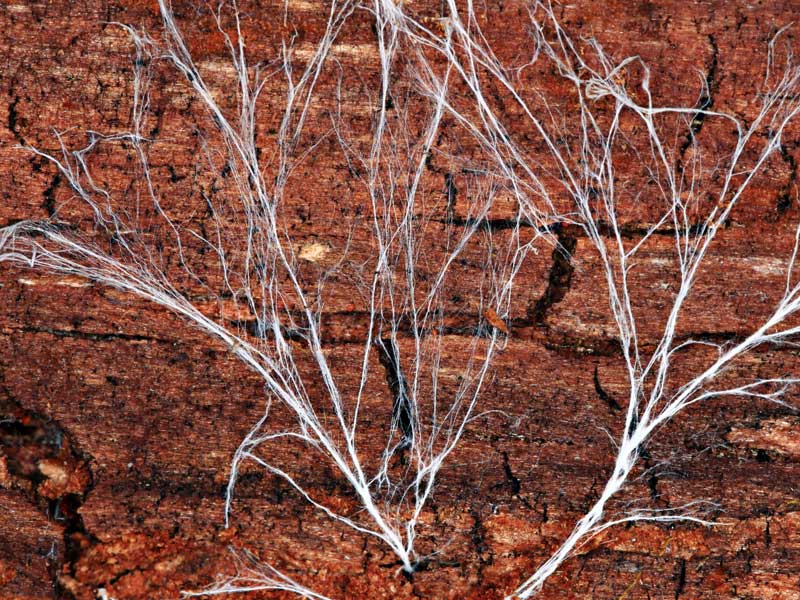
Mycelium… the underground network that connects and supports all life.
Mycelium is the miracle beneath our feet. It’s the root system of the mushrooms we see above ground, and a whole lot more. Read the full article...
7 Different products that are made with mushroom mycelium.
From buildings to vegan leather and beyond, mycelium is proving to be a powerful alternative to traditional materials. Read the full article...
4 Ways mushroom mycelium challenges our definitions of intelligence.
As humans we like to believe only our species is intelligent. Research into fungal mycelium is now challenging that assumption. Read the full article...
Oyster mushrooms have more to offer than any other mushroom.
Oyster mushrooms are delicious, medicinal, and a miracle when it comes to mycoremediation and biowearables. Read the full article...
